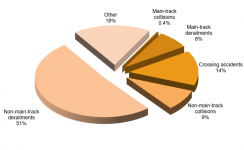Look at the infant mortality rates from 1950 to now to see how far we have come
Chart and table of the Canada infant mortality rate from 1950 to 2023. United Nations projections are also included through the year 2100.

www.macrotrends.net
This graph covers the infant mortality rates for most of the time that school was open
The infant mortality rate in Canada, for children under the age of one year old, was 187 deaths per thousand births in 1900.

www.statista.com
Those stats will be inconvient truths that will be buried by the cries of "Colonialism" and "Genocide". And it was well known at the time that the schools were a deathtrap.
Excerpt
1906-1910 THE BRYCE REPORTMonarch: Edward VII
Prime Minister: Sir Wilfred Laurier
Premier: Richard McBride
Federal Ministry

epartment of the Interior
In the News1906 Delegation of BC Chiefs travel to England to meet with King Edward to discuss the Indian Land Question.
Mar 24 1906 “Census of the British Empire” shows England rules 1/5 of the world .
1907 Nisga’a form Nisga’a Land Committee.
Feb 13 1907 English suffragettes storm British Parliament and 60 women are arrested.
Apr 19, 1907 11th Boston Marathon won by Aboriginal athlete Tom Longboat of Canada.
1908 BC government decides to make no more reserve allocations.1909 The group “Interior Tribes of British Columbia” is formed.
1910 BC refuses to submit question of Aboriginal Title in BC to British Privy Council.
BACKGROUNDER
Tuberculosis is a highly contagious disease, caused by bacteria that infects any organ, but most commonly affects the lungs. Today we have modern antibiotics to treat the disease, but in 1907 diet, rest, sunlight and fresh air were the main treatments. TB, also known as consumption, was at epidemic levels among Aboriginal communities in the early twentieth century. With hundreds of children living so close together in dormitories, it is no wonder that the Industrial Schools, and later the Residential Schools, were breeding grounds for spreading the disease. In 1907, Dr. Peter Bryce, the Chief Medical Officer for the Department of Indian Affairs conducted a study of the health of students in Industrial Schools in Manitoba, Saskatchewan and Alberta. He found extremely high rates of death from tuberculosis in the schools. His findings were shocking, and his report received publicity across the country. Duncan Campbell Scott and the Department of Indian Affairs did very little to address the problem.Bryce continued to push the government to recognize the problem. He conducted another study and report in 1909. This report was circulated to medical, school and church officials for comment. However, there was minimal action taken. You will read part of Scott’s response in the documents.Bryce continued to criticise the department and ultimately he was removed from his position. In 1922, after years of inaction and no change in the death rates, he published The Story of a National Crime: An Appeal for Justice to the Indians of Canada to bring awareness to the issue.



